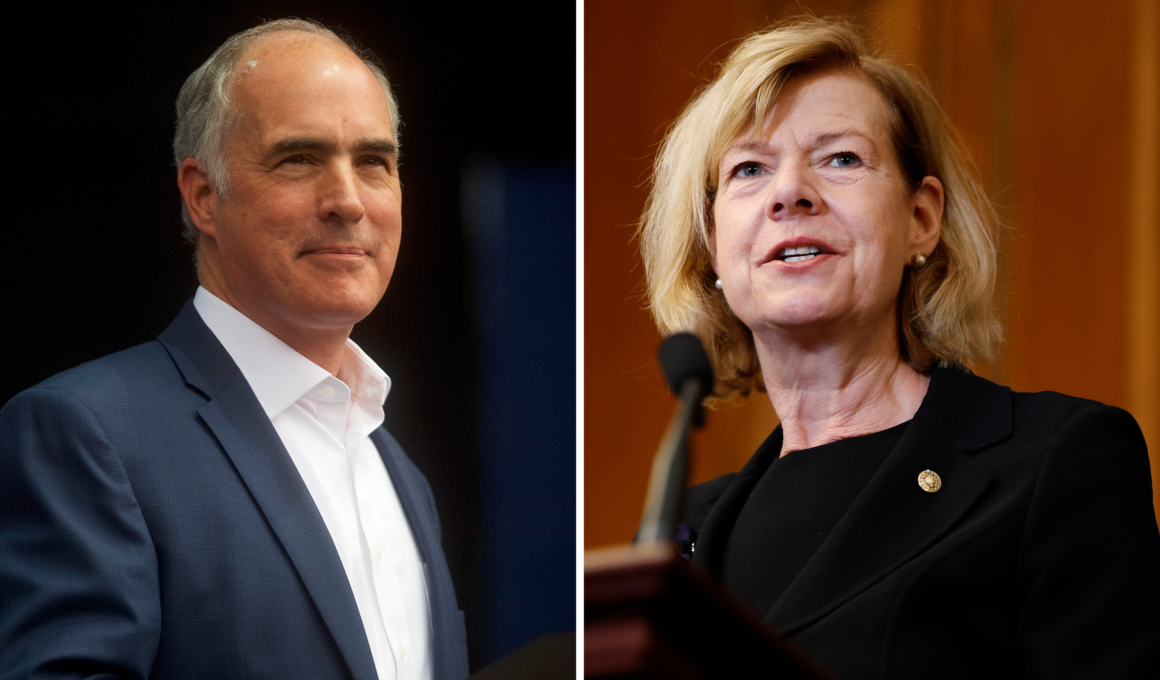With four months until the election, Democrats are leading most Senate polls in competitive states as they face a potentially challenging map that will force them to defend seats in Republican-leaning states.
Control of the Senate is up for grabs in November, as both Democrats and Republicans are optimistic about their chances of winning key elections in Congress‘ upper chamber. Democrats currently hold 51 seats, including four independents who caucus with the party, while Republicans hold 49.
This means Republicans need to flip only one or two seats to win a majority, depending on who wins the presidential race, as the vice president serves as the tiebreaking vote. Republicans are already viewed as strong favorites to win the seat being vacated by Senator Joe Manchin in West Virginia, one of the most conservative states in the country.
This means Democrats must hold every other seat or pull an upset in another more Republican-leaning state to maintain control of the Senate.
However, polls suggest Democrats are currently favored in most swing states, even several in which former President Donald Trump leads on the presidential level. Democrats are hoping strong incumbents in these states can hold on to what could become challenging races in November, delivering a Senate majority next year.
This map shows the state of polling for Senate races:
States where either Democrats or Republicans are viewed as easy favorites are dull red or blue, while competitive states, where polls suggest either party may win by single digits, are more vibrantly shaded. Montana, where recent polls have suggested the race is closely divided, is purple to represent its tossup status.
Tommy Garcia, a spokesperson for the Democratic Senatorial Campaign Committee, told Newsweek on Thursday, “We are preparing for every battleground Senate race to be close, but we also know voters view Senate races as candidate vs. candidate battles and that we will win because we have better candidates.”
States that do not have a Senate seat up for reelection this year are gray.
Democrats Leading in Swing States, but Republicans Still May Have Path to Majority
Democratic candidates in Arizona, Michigan, Nevada, Ohio, Pennsylvania, and Wisconsin are considered slight favorites in their races, according to recent polls.
Emerson College released a new poll of swing states on Thursday that included Senate polling.
It found Democratic Representative Ruben Gallego leading Republican Kari Lake in Arizona by four points (46 percent to 42 percent). The poll surveyed 800 registered voters on July 22 to 23. They are running to replace independent Senator Kyrsten Sinema.
In Michigan, Democratic Representative Elissa Slotkin also held a four-point lead over former Representative Mike Rogers (45 percent to 41 percent). They are vying to replace Democratic Senator Debbie Stabenow.
Elsewhere, Democratic Senator Jacky Rosen held a 4-point lead over Republican Sam Brown in a recent Redfield & Wilton Strategies poll of Nevada voters. The poll surveyed 412 likely voters from July 16 to 18.
The Emerson poll also found Democratic Senator Bob Casey with a 4-point lead over Republican Dave McCormick in Pennsylvania’s Senate race (48 percent to 44 percent). It surveyed 850 registered voters from July 22 to July 23. Meanwhile, a North Star Opinion Research Survey conducted among 600 likely voters from July 20 to 23 found Casey leading by eight points (49 percent to 41 percent).
Wisconsin Democratic Senator Tammy Baldwin led Republican Eric Hovde by five points (49 percent to 44 percent), according to the Emerson College poll, which surveyed 845 registered voters from July 22 to 23.
Republicans are still hopeful they can reach a majority by flipping two Democratic-held seats in traditionally conservative states.
In Ohio, Democratic Senator Sherrod Brown is facing a challenge from Republican Bernie Moreno but has continued leading recent polls. For instance, a June 29 to July 1 Remington Research Group poll conducted among 611 likely voters found Brown 2 with a 6-point lead (50 percent to 44 percent).
Montana may be Republicans’ strongest chance to reach a majority. The Remington Research Group poll of 570 likely voters in Montana found Republican Tim Sheehy leading Democratic Senator Jon Tester.
However, other polls show the race as closer. A Public Opinion Strategies poll conducted among 500 likely voters from June 11 to 13 showed the two candidates tied, receiving 46 percent of the vote each.
Elsewhere, Republicans are hoping Maryland’s Senate seat could be competitive. Although the state is traditionally Democratic, popular former GOP Governor Larry Hogan is running, bolstering their hopes of winning.
Still, Democrat Angela Alsobrooks led Hogan in a Public Policy Polling survey by eight points (48 percent to 40 percent). The poll was conducted among 635 voters from June 19 to 20.
Democrats view seats in Florida and Texas as potentially competitive.
A Florida Atlantic University/Mainstreet Research poll conducted among 771 likely voters from June 8 to 9 found former Democratic Representative Debbie Mucarsel-Powell trailing Republican Senator Rick Scott by two points (45 percent to 43 percent).
In Texas, an ActiVote poll conducted among 400 likely voters from June 25 to July 18 found Senator Ted Cruz leading Representative Colin Allred by 8 points (54 percent to 46 percent).
Uncommon Knowledge
Newsweek is committed to challenging conventional wisdom and finding connections in the search for common ground.
Newsweek is committed to challenging conventional wisdom and finding connections in the search for common ground.







